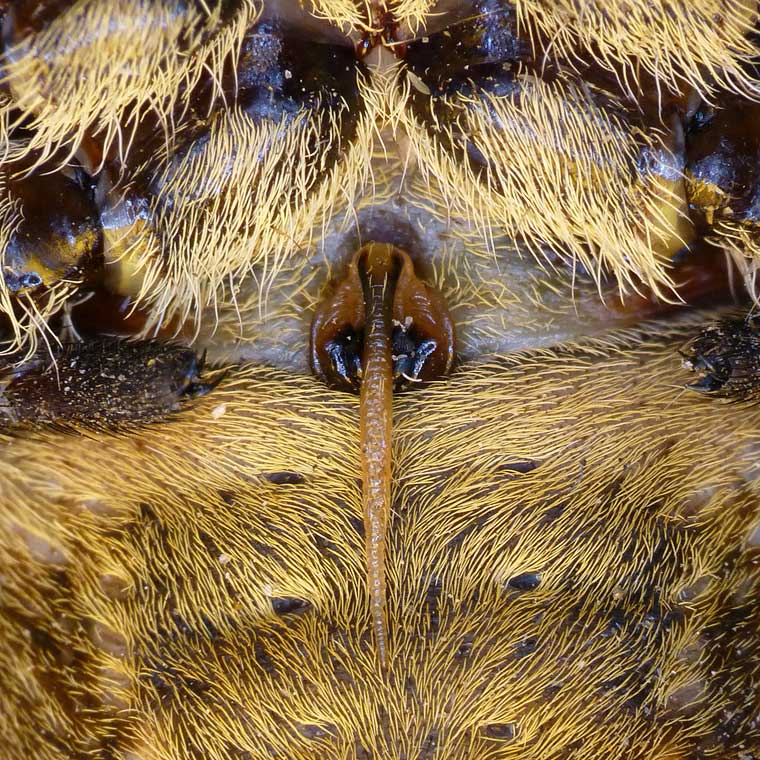A large, powerful and robust orb weaver with a triangular abdomen, widespread across eastern coastal Australia, common in gardens. Also recorded from Perth, coastal north-west Western Australia and coastal Northern Territory. Females to 30mm, usually around 20-25mm. Males also large, to 25mm. Variable in colour and pattern, can be grey, brown, orange, reddish or black, with spots, stripes, and shields lighter in colour, often nearly white. The legs reveal vivid dark red or black bare sections. The body, on the web and in daytime retreat, is usually tucked up, head down. The female has a distinctive long scape like a spear projecting downward over the epigastric furrow. The female builds its large vertical orb web each night and consumes it in the morning, then spends the day camouflaged in a retreat tucked up amongst leaves and twigs, usually at one of the corners of the web's extremeties. Can bite if trapped against skin, not normally aggressive unless provoked. Originally Epeira transmarina, described by Keyserling in 1865, became Araneus for a while then Eriophora in 1980 and Hortophora in 2021.
- From above in daytime retreat
- Camouflaged against Casuarina bark
- Black and white colouring on Akubra
- Female on web, showing upperside
- Female on web, showing underside
- Male
- Sub adult male on the move
- Female adult from above, body length 26mm
- Female adult underneath, body length 26mm
- Female adult genital scape
From above in daytime retreat
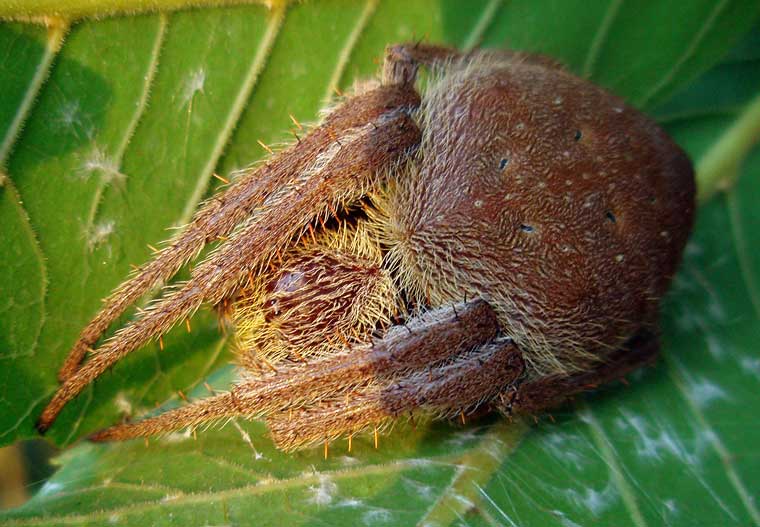
Camouflaged against Casuarina bark
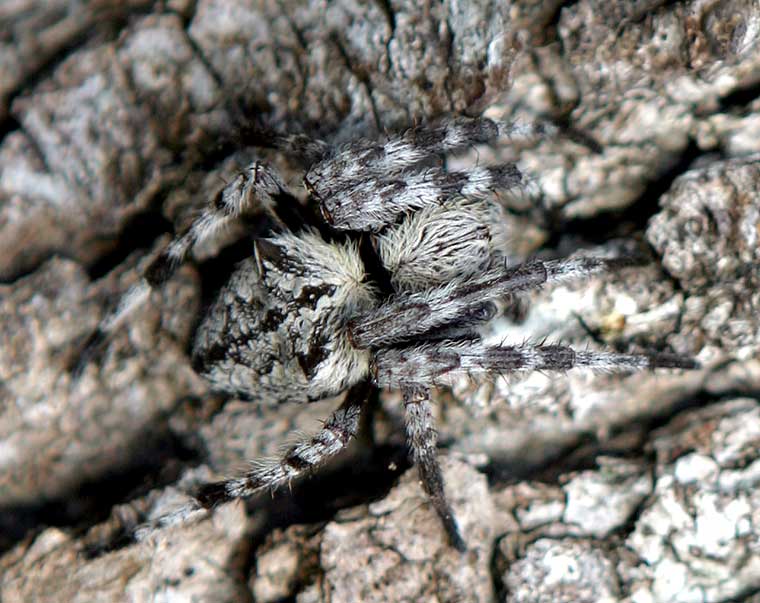
Black and white colouring on Akubra

Female on web, showing upperside
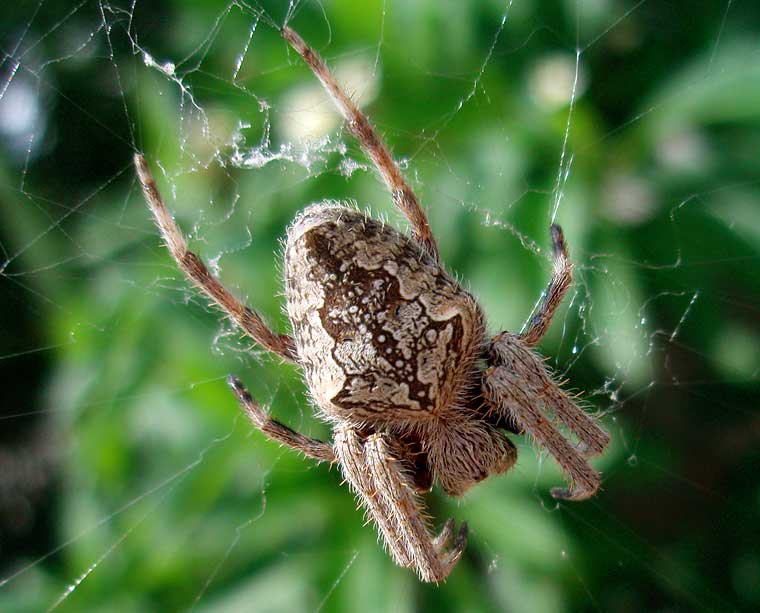
Female on web, showing underside
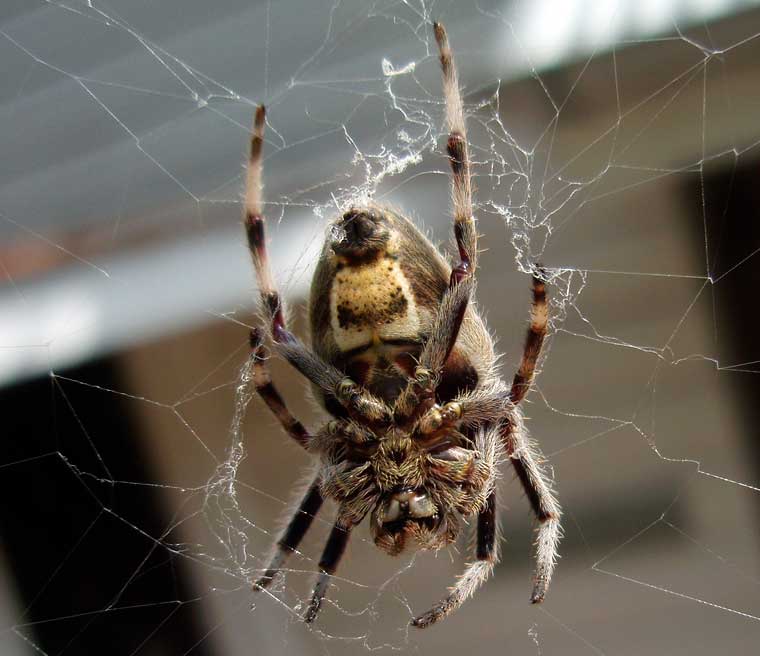
Male
Males can be as large as females, but when seen together on a web the male is usually smaller.

Sub adult male on the move
When moving the "alarm" colour of the body flashes vividly.
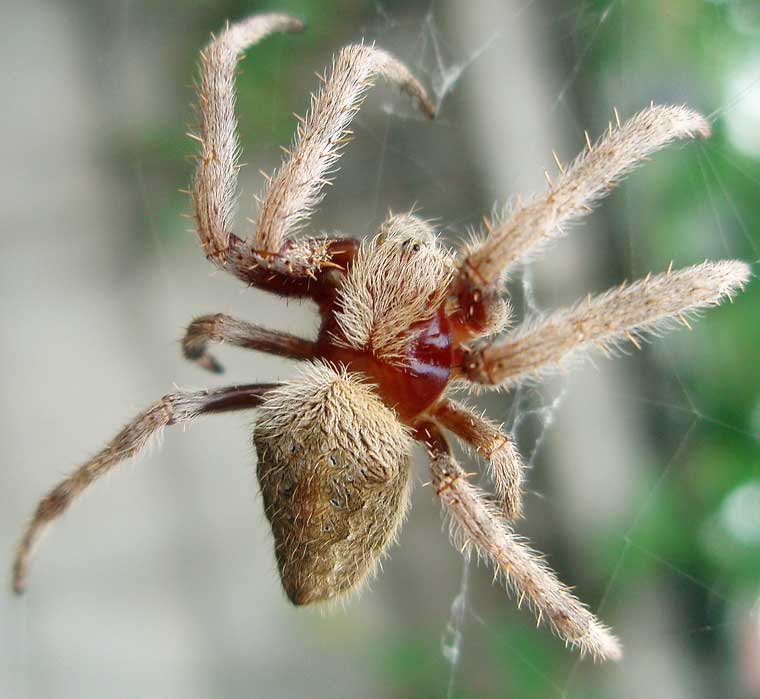
Female adult from above, body length 26mm
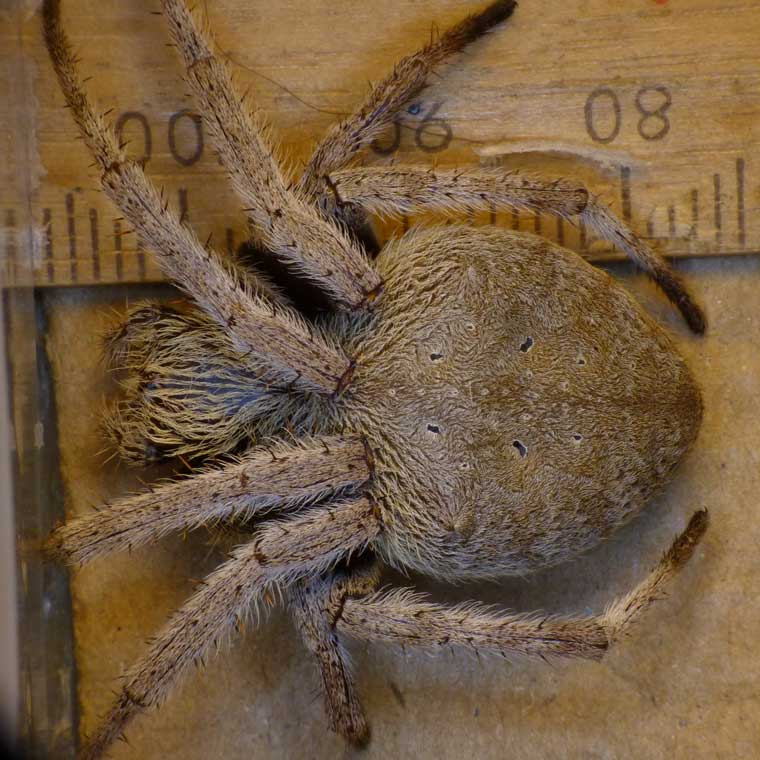
Female adult underneath, body length 26mm
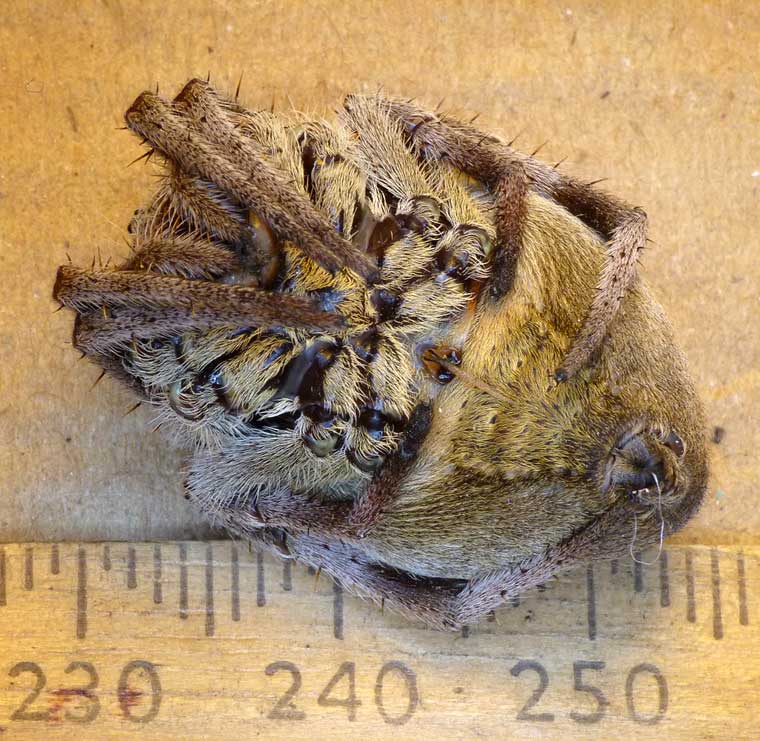
Female adult genital scape
